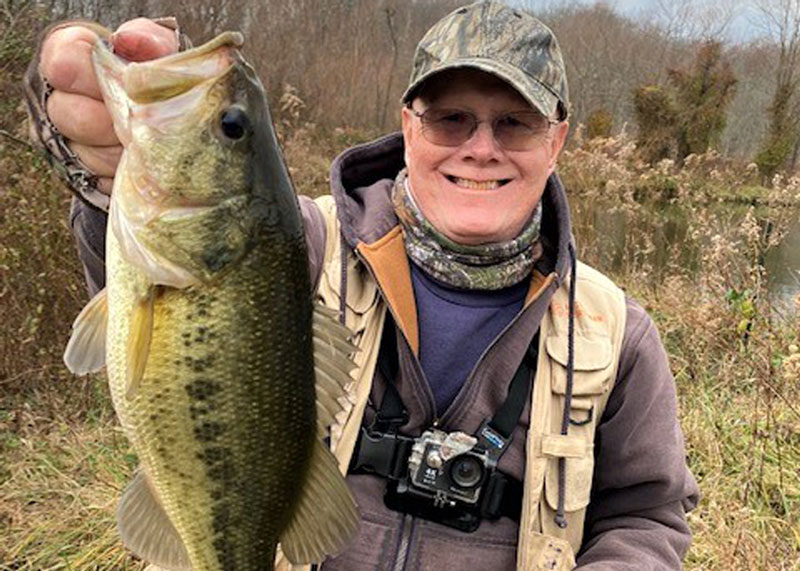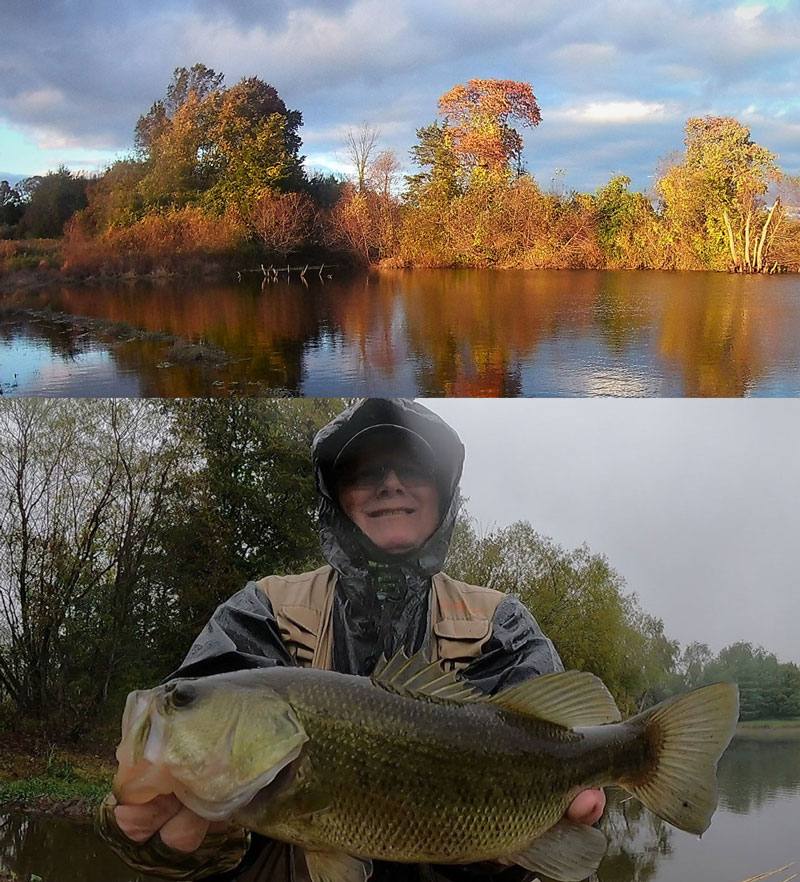It’s October and you’re itching to get out for a few hours of largemouth bass fishing? You know of a certain little lake that has a good supply of fish and the time feels right to get onto some good ‘uns. Bass fishing in the fall can be a great gig.

Many species turn on and offer great fishing once the days get shorter and the nights get cold, and largemouth bass are no exception. For me, this usually triggers a serious effort to seek some of the best bass fishing of the year. Some weed types are dying out in local waters and cooler nights have fish moving shallow to feed on any available forage in preparation for a long winter. Often, as in recent years, the fall bass bite extends into the winter months due to our pattern of warmer winters throughout the Mid-Atlantic region. Combined with lower water levels and less angler effort, fall bassing can, in some waters, be a lonely game where overlooked populations exist in smaller public venues and community lakes. Often the bass outnumber other popular autumn gamesters like pickerel, snakeheads and even crappie.
Bass Fishing Timing and Tactics
Try not to pay too much attention to the calendar, but rather weather patterns and conditions that key a good bite. A warm, dry October can be frustrating with lethargic bass that just don’t respond to those classic spinnerbait, crankbait, or Ned rig options. We like to target the fish when water temperatures dip below 55 degrees and remain there or lower for a few weeks. A lot depends on the progression of the season but clearly once we get overnight lows consistently in the 40s the fishing should bust wide open.
Initially, these fish in the “55 zone” are more than willing to chase moving baits like quarter- to half-ounce spinnerbaits and lipless crankbaits including the classic Rat-L-Trap or the newer Googan Clutch. Depending on the forage base in your waters, colors can matter. Many smaller lakes have a golden shiner population that spells candy for a big bass so gold may be the optimal color choice. Some other lakes have a shad-based prey, and a silver pattern may produce better. Still others have only sunfish species as the main diet and then the color scheme is different. Basically, it’s matching the hatch with lures that represent the bulk of the baitfish in the specific waterway you’re visiting.
When water temperatures drop below 50 you may have to slow down your approach. Still, a bass has no problem running down a fast-moving blade bait in 48-degree water, or even colder. Other options when temperatures are descending are the classic Ned rig and smaller crankbait series like the Rapala Count Down CD 5 or CD 7 for a slow fall and methodical retrieve.
Weather patterns matter, and we prefer a falling barometer that is accompanied by some wind and at least some cloud cover. Unfortunately, not everyone can “call in fish” or take a sick day when this occurs. However, my records indicate that big fish windows open up when a front is approaching and these conditions exist. The wind may be out of the north or the west, and gusty, but fish seem to respond well under these conditions most of the time. Ultimately, we go when the opportunity allows us to but timing matters.
Bass Fishing in the Rain
Some of our best fall bass forays have happened when incoming rain either muddies or raises water levels at creek mouths and triggers bass to stage or position in and around channeled areas to intercept baitfish. If the timing is just right, you can encounter a lot of fish in very small areas. Cold rain can be a turn-off, but if the temperatures are near the existing conditions, it could be game on.
Keep raingear, knee boots, waders, and an open mind when precipitation is on the way. Especially after an extended dry spell or warmer than usual fall weather, the rain game can be an X-factor for banner fishing. The fall bite for bass can be a prime-time event — this year see if you can’t bust a few hawgs from your favorite haunts.

Gear for Fall Bass Fishing
The type of cover and conditions will dictate your tackle requirements, as well as the top-end size of the bass you may encounter. Where we fish, a five- and six-pound bass would be the top-end specimen on any given day of the year and still not an everyday catch. Cover usually consists of dying or still green weed beds, fallen wood or small, incoming creeks and feeders that can draw fish, especially after a rain event.
The bulk of our fishing is done with medium spinning gear with 20-pound test braids. Rods are 7.0’ to 7.5’ sticks with power to set hooks and cast far. These moderate action, medium taper rods are also able to detect strikes that can be light at times. Often, fall largemouths will swipe at a lure and get hooked on the outside of the cheek or bottom of the lower jaw. This telegraphs to a slight tick or bump at the rod tip, calling for an immediate hookset. On days when fish are really thumping you’ll just get a hard strike, and the fish is usually on. It varies from day to day. Occasionally we will switch to a medium baitcasting outfit with 14-pound clear monofilament to toss half-ounce spinnerbaits.
With retrieving lures like the spinnerbaits, crank, or rattle baits, we utilize a cross-lock or duo-lock swivel tied directly to the braid with a Palomar or doubled clinch knot. This enables quick lure changes and helps in hook-setting chores with no mono or fluorocarbon leader. When we fish the Ned rigs in and around green weeds, we will drop down to 10-pound braid with a 10-pound clear leader for this finesse effort. Our favorite combo is the 1/15-ounce SchroomZ Head with a 2.75 TRD plastic, worked slowly around existing green weeds or brush.
Some conditions may require the use of heavier braid to wrestle big fish from brush, weeds, or wood. When faced with heavy cover it is wise to up your braid strength to 40 pounds or more. Hence, up your gear to medium heavy or heavy to accommodate.
-By Jim Gronaw